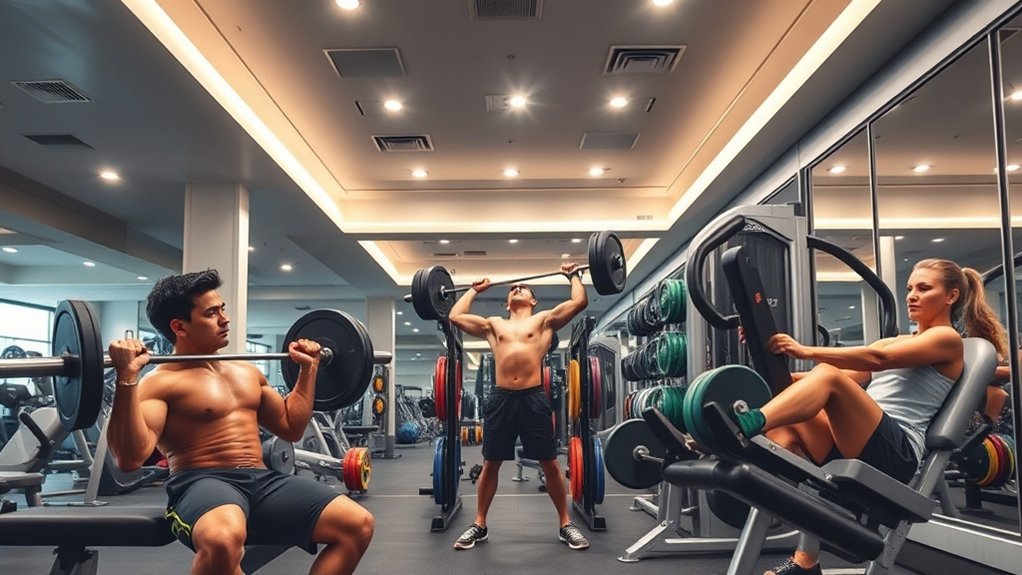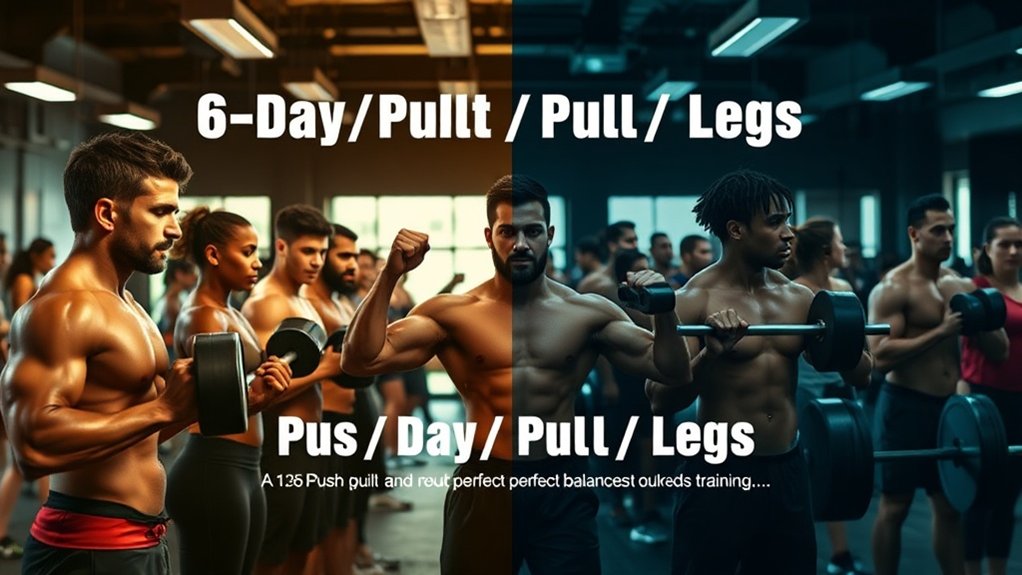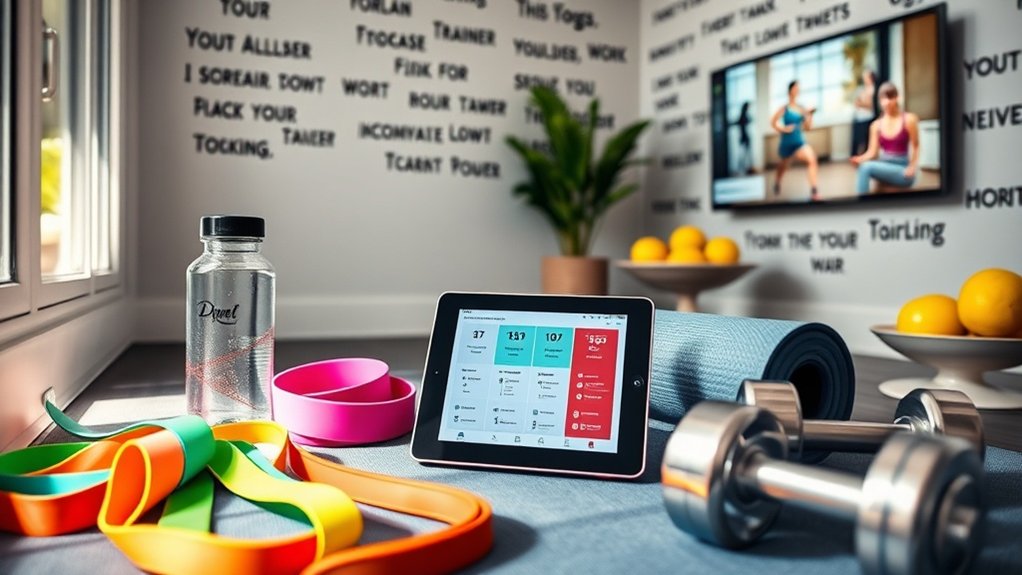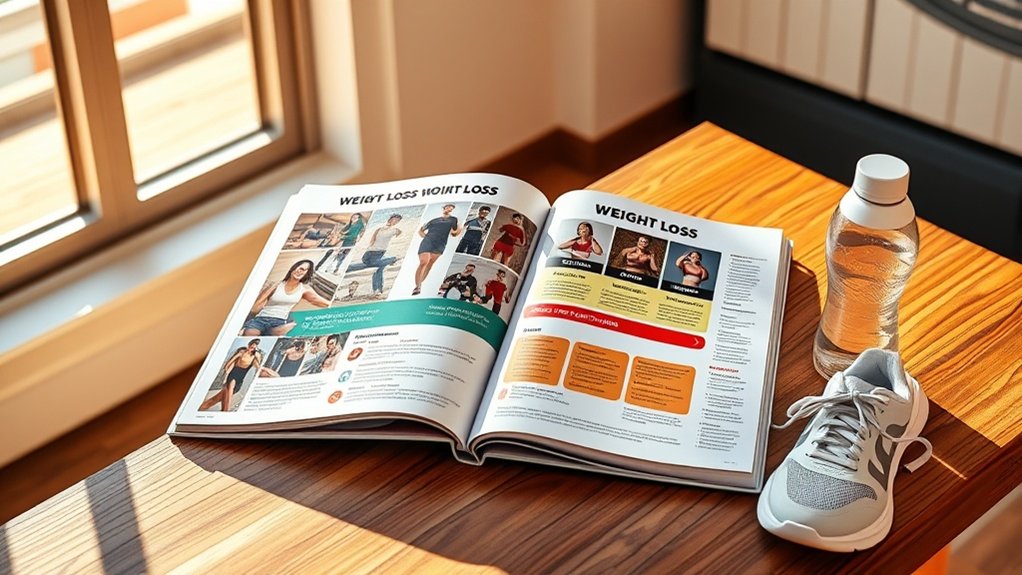A 6-day push/pull/legs split trains each muscle group twice weekly by rotating through push exercises (chest, shoulders, triceps), pull movements (back, biceps), and leg workouts. You’ll perform 4-6 exercises per session with compound lifts prioritized first, followed by accessory work. This frequency doubles your weekly anabolic windows compared to traditional splits, allowing 40-60% more training volume while maintaining proper recovery between identical muscle groups. Rest days follow every three training sessions to optimize adaptation and prevent overtraining. The thorough structure below breaks down specific A/B day variations for continuous progression.
Understanding the 6-Day Push/Pull/Legs Training Philosophy

The 6-Day Push/Pull/Legs (PPL) training philosophy divides your weekly workouts into three distinct movement patterns, each targeting specific muscle groups through biomechanically related exercises.
This 6-Day Workout Plan strategically addresses push movements (chest, shoulders, triceps), pull movements (back, biceps), and leg-focused exercises (quads, hamstrings, glutes, calves) twice weekly. By organizing your workout routine this way, you’ll optimize training volume while allowing adequate recovery between sessions targeting the same muscles.
Each workout prioritizes compound exercises with heavier loads before shifting to accessory work. This progression maximizes strength development and muscle growth while minimizing muscle imbalances.
The split’s twice-per-week frequency per muscle group provides sufficient stimulus without overtraining. Proper recovery remains essential—implement 1-5 minute rest intervals based on exercise intensity.
This approach suits intermediate and advanced lifters seeking structured, evidence-based programming that balances training stress with recovery demands.
Benefits of Training Each Muscle Group Twice Per Week
When you train each muscle group twice per week, you trigger muscle protein synthesis—the biological process that repairs and builds muscle tissue—approximately 48-72 hours after each session, effectively doubling your weekly anabolic windows compared to once-weekly training. This increased training frequency allows you to accumulate greater total volume while distributing workload more safely across multiple sessions, reducing overuse injury risk.
| Training Aspect | Once Weekly | Twice Weekly |
|---|---|---|
| Muscle Protein Synthesis Events | 1 per week | 2 per week |
| Weekly Volume Distribution | Concentrated | Distributed |
| Recovery Time Between Sessions | 7 days | 3-4 days |
Higher training frequency boosts neural adaptations that improve lifting efficiency while promoting superior muscle hypertrophy and strength gains. You’ll recover adequately between sessions while maximizing muscle growth potential.
Complete 6-Day PPL Program Structure: A/B Day Variations

You’ll rotate between A and B variations for each training day, which provides distinct exercise stimuli while maintaining your push, pull, and legs frequency throughout the week.
This structure allows you to target muscle groups from different angles—for example, flat pressing on Push A versus incline pressing on Push B—while managing fatigue through varied movement patterns.
The A/B system enables progressive overload tracking for specific exercises and reduces repetitive stress injuries that can occur from performing identical movements in every session.
Push A/B Workout Breakdown
By splitting your push days into A and B variations, you’ll systematically target your chest, shoulders, and triceps through complementary training stimuli that maximize both strength and hypertrophy adaptations.
Your Push A/B workout emphasizes different training variables to optimize muscle groups development:
| Training Variable | Push A | Push B |
|---|---|---|
| Primary Focus | Compound movements (Barbell Bench Press, Overhead Press) | Isolation exercises (Dumbbell Flyes, Tricep Extensions) |
| Rep Range | 4-6 reps for strength training | 10-15 reps for muscle hypertrophy |
| Loading | Higher weight, lower volume | Moderate weight, higher volume |
This push workout structure guarantees you’re hitting 20-30 weekly sets per muscle group while varying mechanical tension and metabolic stress. You’ll track progress more effectively by adjusting loads based on performance across both sessions, preventing adaptation plateaus while maintaining consistent workout plan adherence.
Pull A/B Workout Breakdown
Your Pull A/B workouts systematically develop your back, biceps, and rear deltoids through distinct loading patterns that mirror the push day structure.
Pull A emphasizes heavy compound movements like barbell rows and pull-ups with lower rep ranges (6-8), while Pull B incorporates moderate loads with higher volume (10-12 reps) using varied exercises to address muscle imbalances.
Each session includes 4-5 exercises strategically selected for thorough back development and muscle growth. You’ll need 2-3 minutes recovery time between heavy compound lifts and 1-1.5 minutes for isolation work.
This alternating approach guarantees progressive overload by varying mechanical stress patterns across training weeks. By rotating between Pull A and Pull B, you’ll stimulate different muscle fibers while allowing adequate recovery time, optimizing both strength gains and hypertrophic adaptations throughout your back and biceps.
Legs A/B Workout Breakdown
Strategic leg development demands distinct training emphases across your two weekly sessions, with Legs A prioritizing quad-dominant movements through heavy squatting patterns (6-8 reps) and Legs B targeting posterior chain strength via hip-hinge exercises and hamstring work (8-12 reps).
This Legs A/B structure optimizes muscle protein synthesis by training each lower body region twice weekly while allowing adequate recovery between sessions.
Your Legs A focuses on barbell back squats, leg press, and lunges for maximum quadriceps muscle engagement.
Legs B emphasizes deadlifts, Bulgarian split squats, and hamstring curls to develop glutes and hamstrings.
Each 60-75 minute workout provides sufficient volume for hypertrophy while maintaining balanced development across all lower body musculature.
You’ll modify exercise selection based on your equipment availability and goals, making certain targeted training that promotes continuous adaptation through strategic programming variations.
Exercise Selection and Volume Distribution Across Push A/B, Pull A/B, and Legs A/B

When structuring a 6-day Push/Pull/Legs split, the A/B workout variations serve a critical function: they prevent adaptive resistance and allow you to target muscles from different angles while managing accumulated fatigue.
Your exercise selection should prioritize compound movements first—Barbell Bench Press on Push A, Incline Dumbbell Press on Push B—then shift to accessory exercises for complete muscle stimulation.
Volume distribution across your weekly training volume guarantees balanced muscle development by training each muscle group 2-3 times weekly.
Push A/B targets chest, shoulders, and triceps; Pull A/B emphasizes back and biceps; Legs A/B focuses on quadriceps, hamstrings, and glutes.
Each session contains 4-6 exercises, strategically sequenced for muscle hypertrophy while preventing overtraining.
This systematic approach to volume distribution maximizes strength gains and recovery efficiency.
Progression Strategies and Intensity Management for High-Frequency Training
Managing progression in a 6-day training split requires strategic intensity manipulation to prevent overtraining while maximizing adaptations.
You’ll need to implement systematic progressive overload through specific rep targets, carefully monitor total training volume to avoid exceeding your recovery capacity, and schedule deload periods to facilitate supercompensation.
These three elements work synergistically to guarantee continuous strength and hypertrophy gains while minimizing injury risk across your high-frequency training blocks.
Progressive Overload Rep Targets
Progressive overload forms the cornerstone of any effective training program, requiring systematic increases in training stress to drive continuous adaptation.
For your push/pull/legs workout, target 15 total reps across 5 sets for compound lifts. When you exceed this by 0-3 reps, increase heavy weights by 2.5-5lbs; exceeding by 4+ reps warrants 5-10lbs increases.
Within the hypertrophic rep range of 6-12 repetitions, you’ll maximize muscle growth while maintaining proper form. Implement back-off sets at 20% reduced load, performing maximum quality reps to improve training volume.
Vary your rep ranges strategically: 3-6 reps builds strength, 6-12 promotes hypertrophy, and 12-20 increases metabolic stress.
Consistent tracking progress through apps like Hevy guarantees precise monitoring of muscle adaptation and recovery management.
Managing Training Volume Safely
High-frequency training demands meticulous attention to volume management to prevent overtraining while maximizing adaptation. You’ll need to maintain 10-20 weekly sets per muscle group while monitoring recovery through structured workouts. Progressive overload remains essential, but your rest periods must align with training intensity—heavier compounds require 2-5 minutes between sets to boost hypertrophy outcomes.
| Recovery Parameter | Implementation Strategy |
|---|---|
| Muscle Group Rest | Minimum 48 hours between sessions |
| Weekly Volume | 10-20 sets per muscle group |
| Deload Frequency | Every 8-12 weeks at 40-60% reduced intensity |
| Rep Range Focus | 6-12 reps for ideal muscle growth |
Track your performance metrics consistently. If recovery indicators decline—persistent fatigue, decreased strength, or compromised form—reduce training volume immediately to prevent injury and maintain long-term progress.
Deload Timing and Implementation
When your performance plateaus despite consistent effort, strategic deload weeks become essential recovery tools that preserve long-term gains.
You’ll need deloading every 8-12 weeks to prevent overtraining in high-frequency programs like Push/Pull/Legs. During deload weeks, reduce training volume by 30-50% through lighter weights or fewer sets while maintaining your workout frequency.
Watch for clear indicators: persistent fatigue, declining strength, and excessive muscle soreness signal your body needs recovery time. This reduction facilitates muscle growth by allowing complete tissue repair without sacrificing training consistency.
Beyond physical restoration, deloading resets your mental focus and motivation.
You can incorporate light cardio or mobility work during these weeks to improve recovery without compromising adaptation. This structured approach guarantees continuous progress rather than forced training breaks from exhaustion.
Recovery Optimization and Rest Day Placement in a 6-Day Split
Because muscle adaptation occurs during rest rather than training, strategic recovery planning becomes non-negotiable in a 6-day split.
Place your rest day after every three training sessions to optimize muscle rebuilding and manage fatigue levels effectively.
Essential Recovery Strategies:
- Prioritize sleep quantity – Target 7-9 hours nightly when growth hormone release peaks, directly supporting muscle growth.
- Monitor fatigue levels – Adjust workout intensity based on recovery markers like performance decline or persistent soreness.
- Implement active recovery – Incorporate light walking or yoga on rest days to improve blood flow without compromising muscle rebuilding.
- Respect recovery windows – Allow 48-72 hours between sessions targeting identical muscle groups.
Your recovery quality directly determines training adaptability.
Without adequate rest day placement, you’ll compromise both muscle growth potential and injury prevention, regardless of programming excellence.
Who Should Use a 6-Day PPL Split: Comparing PPL to Other Training Programs

The 6-day PPL split targets intermediate to advanced lifters who’ve exhausted linear progression models and require increased training frequency for continued adaptation. This workout structure trains muscle groups twice weekly, maintaining heightened protein synthesis and supporting consistent hypertrophy compared to traditional bro splits that limit frequency.
Your training schedule benefits from dedicated push, pull, and leg sessions, delivering greater intensity and volume than generalized routines while promoting balanced development across all movement patterns.
If you’re comparing options, PPL outperforms bro splits for growth through doubled frequency, while offering more targeted work than upper/lower programs. The split’s versatility accommodates demanding schedules without compromising recovery.
However, beginners should prioritize full-body programs initially—you’ll need sufficient training experience and recovery capacity to handle this demanding six-day structure effectively.
Frequently Asked Questions
What Is the 3-3-3 Rule in Gym?
The 3-3-3 rule means you’ll perform three sets of three different exercises per muscle group, optimizing workout efficiency and exercise variation. This strength training approach balances training intensity with muscle recovery, helping you track performance and achieve your fitness goals systematically.
How Do I Create a Personalized Workout Plan?
Studies show 80% of people quit fitness programs within five months. You’ll create a personalized plan by establishing goal setting, exercise selection, workout frequency, intensity levels, recovery strategies, nutrition planning, progress tracking, and equipment usage tailored to your needs.
What Is the 5 4 3 2 1 Workout Method?
You’ll perform descending reps (5-4-3-2-1) with increasing weight, maximizing workout efficiency and training intensity. This method targets multiple muscle groups, improves strength progression, and offers exercise variations while requiring proper recovery importance and mindful workout duration for safety.
How to Design a Push Pull Legs Routine?
You’ll design your routine by balancing exercise variations across push, pull, and legs days while considering workout frequency, muscle recovery, and training intensity. Set clear goals, plan strength progression, maintain exercise balance, and sustain workout motivation throughout your program.



